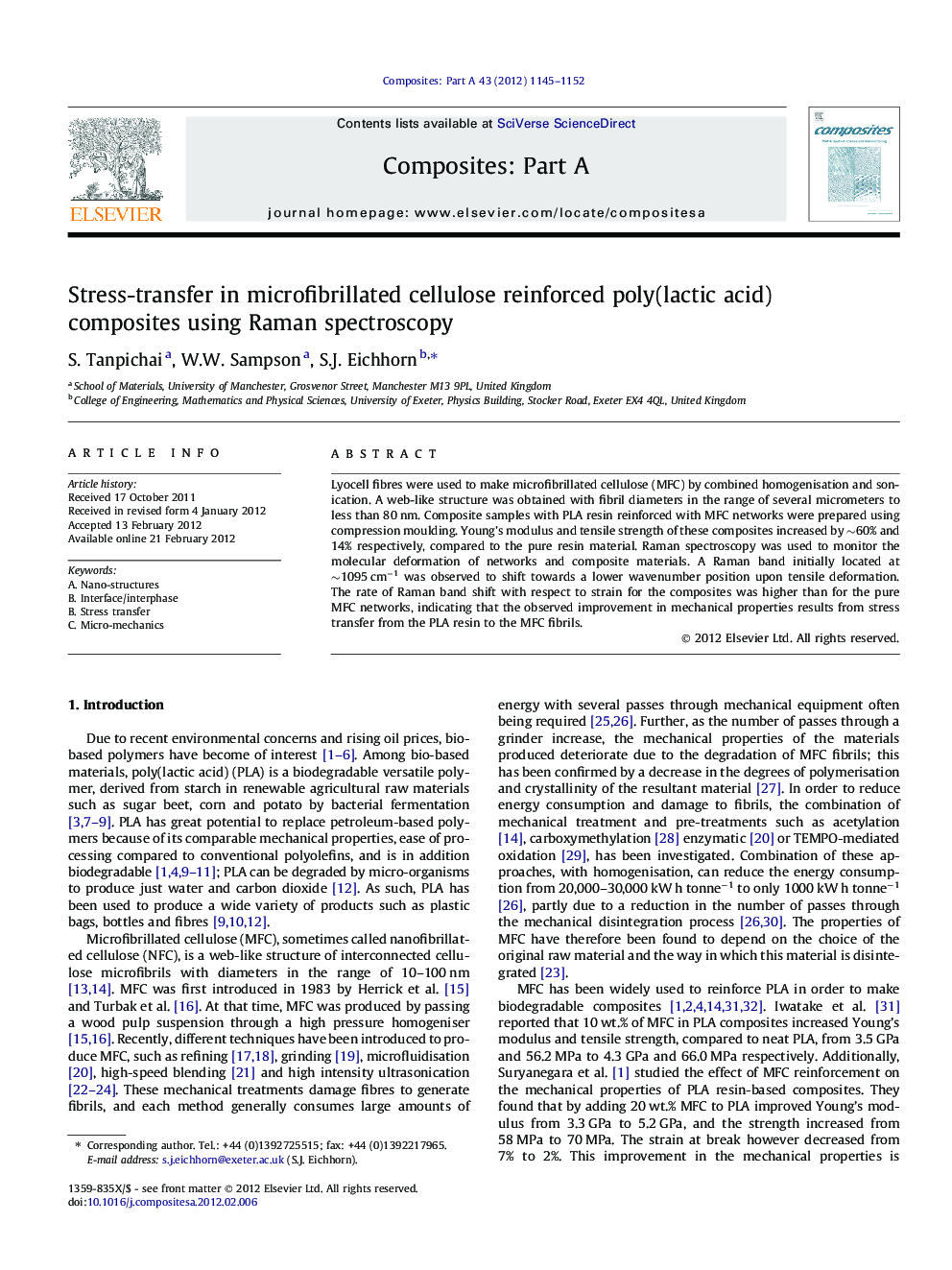| Article ID | Journal | Published Year | Pages | File Type |
|---|---|---|---|---|
| 1466447 | Composites Part A: Applied Science and Manufacturing | 2012 | 8 Pages |
Lyocell fibres were used to make microfibrillated cellulose (MFC) by combined homogenisation and sonication. A web-like structure was obtained with fibril diameters in the range of several micrometers to less than 80 nm. Composite samples with PLA resin reinforced with MFC networks were prepared using compression moulding. Young’s modulus and tensile strength of these composites increased by ∼60% and 14% respectively, compared to the pure resin material. Raman spectroscopy was used to monitor the molecular deformation of networks and composite materials. A Raman band initially located at ∼1095 cm−1 was observed to shift towards a lower wavenumber position upon tensile deformation. The rate of Raman band shift with respect to strain for the composites was higher than for the pure MFC networks, indicating that the observed improvement in mechanical properties results from stress transfer from the PLA resin to the MFC fibrils.
